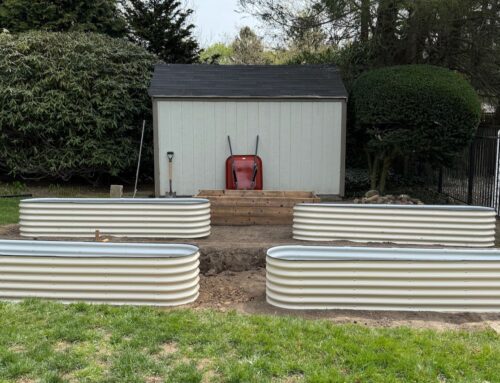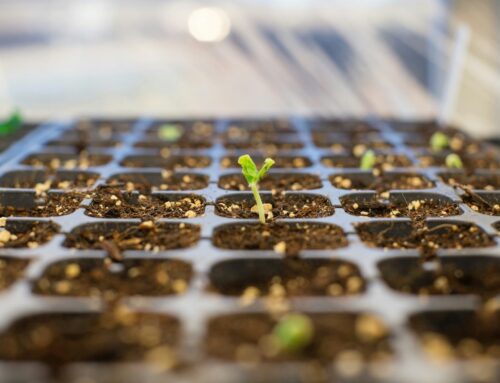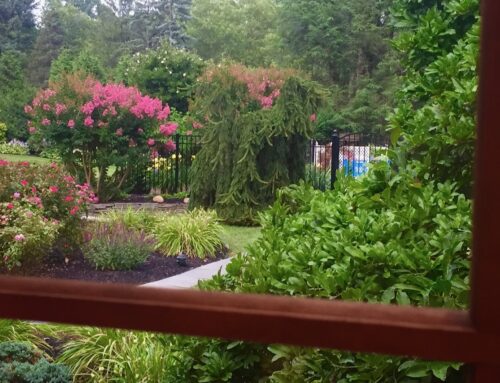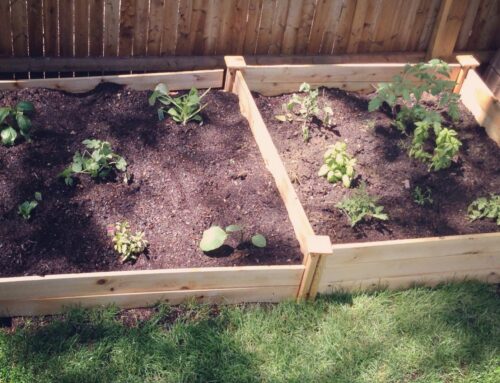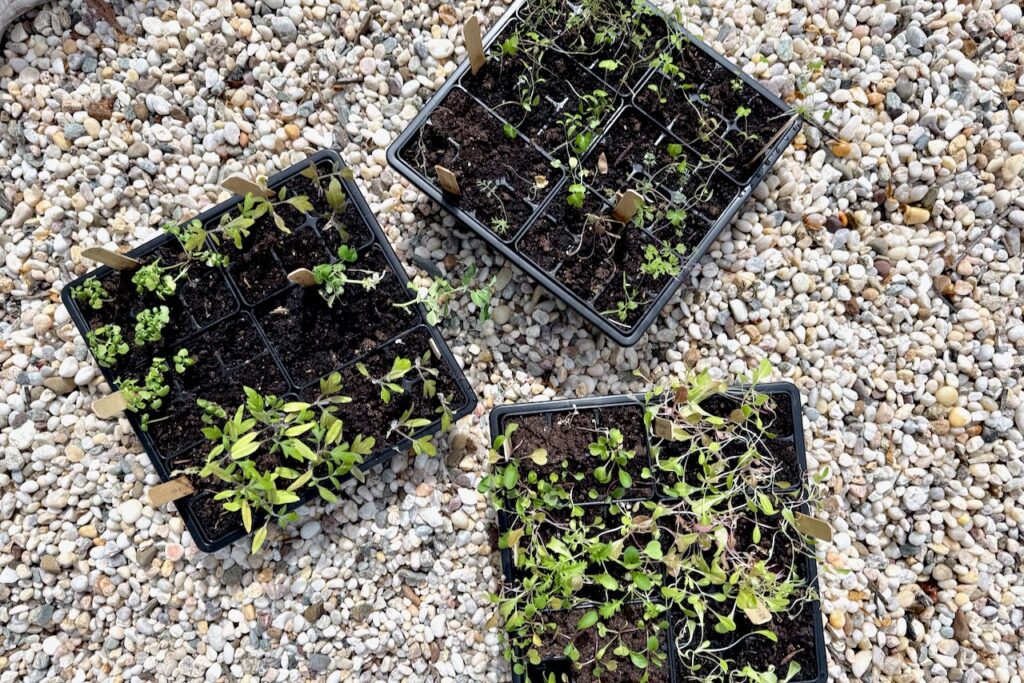
It’s been quite the adventure since I decided to try starting seedlings indoors this year. After our modest start with a kitchen garden last year, I thought, “How hard could it be to start from scratch?” Turns out, pretty hard! Speaking of, I’m hardening off what’s left of my poor seedling crop. Here’s how it all went down.
Starting Seeds Indoor
I set up my little seedling station by our sunniest window, convinced that Mother Nature would do her thing while I provided water and moral support. No grow lights, just faith in the power of our sunny-but-east-facing windows. In hindsight, I may have been a bit optimistic about how much sunlight actually streams through in early spring.
The first few days were exciting – tiny green shoots emerging from the soil! I felt like a proud plant parent watching babies take their first steps. But then things got… complicated.
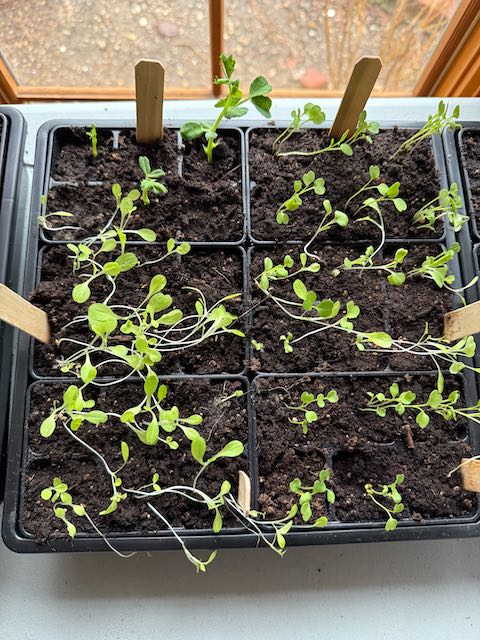
What Am I Even Doing?
If there’s one thing I’ve learned, it’s that I have absolutely no intuition for proper seedling watering. One day I’d look at the trays and think, “They seem dry,” and give them a good soak. The next day, I’d notice standing water and panic that I was drowning my little green friends.
I googled “how much to water seedlings” approximately 37 times, and each source seemed to have different advice. “Keep soil moist but not wet” is apparently gardening’s version of “cook until done” – entirely unhelpful for the uninitiated!
I always watered from the bottom, but I never knew how much that should be. Occasionally I used a spray bottle to give them a mist from the top. I literally had no idea what I was doing. Lol.
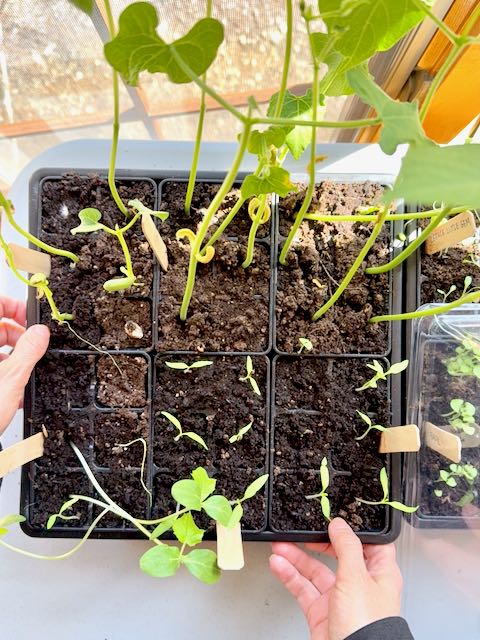
Too Much, Too Soon
My biggest mistake was with the green beans and sugar snap peas. I was so excited to see them sprouting that I didn’t realize I had planted them way too early. Those ambitious little plants shot up, flowered indoors (which I initially thought was a good thing – flowers, yay!), and then promptly collapsed under their own weight. They were like teenagers who hit a growth spurt but hadn’t developed the muscle to support their new height.
Without proper support or enough light, they stretched and stretched toward the window, creating these leggy, pale stems that couldn’t hold themselves upright. Plant faceplant is apparently a thing, and my kitchen counter witnessed several dramatic collapses.
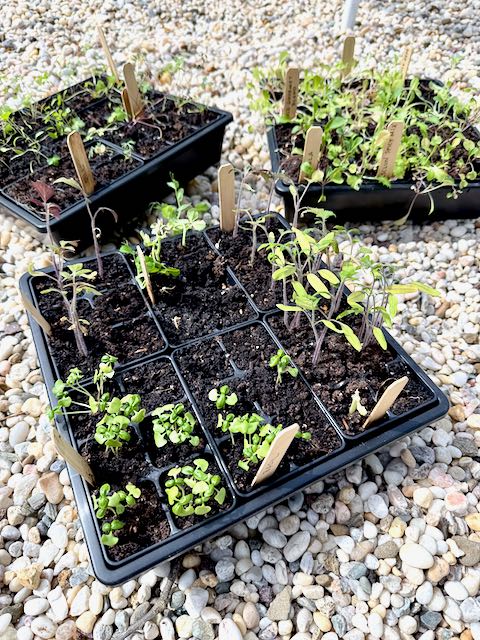
Hardening Off (If We Can Even Call It That)
Now I’m in the process of “hardening off” the survivors. You can’t just take indoor seedlings and plop them straight into the garden. They need to gradually acclimate to the harsh realities of outdoor life: wind, direct sun, temperature fluctuations, and whatever bugs decide they look delicious.
So now I’m doing this daily ritual of carrying trays outside for a few hours, then bringing them back in. Each day, I leave them out a little longer, like a very slow and methodical boot camp for plants.
And can we talk about how pathetic they look? My lettuce seedlings are limp and spindly, nothing like the robust starts I see at the nursery. The herbs are hanging in there but look more like sprigs than the lush little bushes I envisioned.
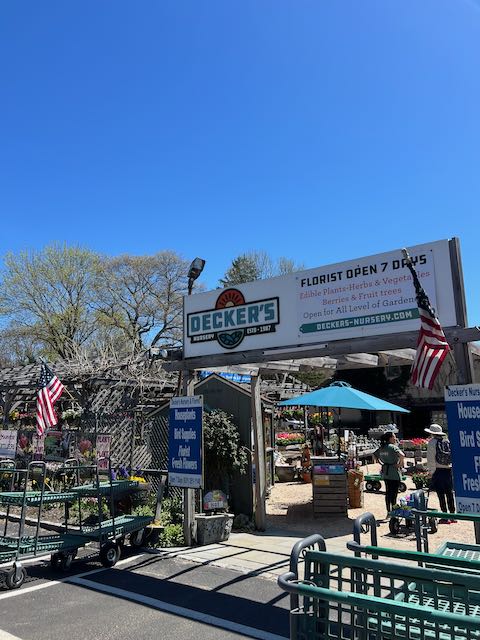
The Backup Plan
I’ve already scouted out the organic seedling selection at my local nursery, and I’m not too proud to admit that I’ll probably end up purchasing most of my plants from there this year. The staff have started recognizing me as the woman who comes in weekly to “just look around” while eyeing their healthy seedlings with obvious envy.
For now, I’m continuing with the hardening off process, hoping that some fresh air and natural sunlight might transform my weaklings into garden-worthy contenders. But I’m also realistic – this year’s garden will likely be a mix of my struggling survivors and professionally grown rescues.
Lessons Learned
If I were to do this again (and despite everything, I probably will because I’m stubborn like that), I would:
- Invest in a grow light instead of relying on window light
- Get a moisture meter instead of playing the guessing game with watering
- Start the beans and peas directly in the garden where they belong
- Be more patient with myself and remember that gardening is a skill that takes time to develop.
For now, I’ll continue my daily seedling shuttle service between indoors and outdoors, cheering on the little plants that have made it this far. And I’ll try not to feel too guilty when I inevitably bring home those beautiful nursery seedlings to fill in the gaps.
Anyone else have seedling disaster stories to share? Please tell me I’m not alone in this!

